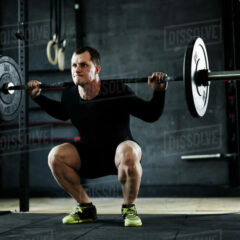When building arm strength, grasping the fundamentals of arm anatomy can set you on the best path for success. Muscles like the biceps, triceps, and those often forgotten forearms play starring roles.
The biceps, sitting comfortably on the front of your upper arm, are what most folks think of when flexing for strength. They’re responsible for elbow flexion, which means they help when you lift items or pull things towards your body. Meanwhile, the triceps stand in the background on the back of the upper arm, providing elbow extension. Triceps are silently on duty whether pressing, throwing, or carving a path through water as you swim.
Forearms don’t get the limelight they deserve, yet they’re critical in everything from gripping a coffee cup to zipping through an intense set of deadlifts. The intricate muscles of the forearm go beyond food grabbing—they stabilize movements and sustain endurance loads.
Balancing these muscles ensures you’re not just building bulk but achieving functional strength designed to power through daily tasks and demanding sports activities with ease. That’s where understanding muscle physiology comes into play. Muscle growth happens when these fibers undergo tiny tears that regeneration processes make stronger, essentially amplifying your strength and power output over time.
So why balance? Overworking one muscle group might lead to imbalance, causing injury or impeding performance growth. Keeping each part of the arm in top shape means more effective performance in whatever challenge you take on.
Effective Arm Workouts: Exercises Designed for Maximum Muscle Engagement
The right exercise routine will engage your muscles for maximum growth and power, building on your understanding of anatomy. Let’s uncover a few trusty exercises guaranteed to work all those arm muscles.
Bicep curls are a staple for a reason. Whether using dumbbells or a barbell, these curls hone in on your biceps. For your triceps, think about exercises like tricep dips or overhead extensions, which let you stretch and strengthen them efficiently.
Compound movements, like push-ups and pull-ups, present a dual benefit since they engage multiple muscle groups, enhancing overall arm strength. With these, your arms work hard, and your core and shoulders join in, creating a dynamic and efficient workout.
Resistance training and bodyweight exercises both have their place in your routine. Machines and free weights offer a controlled environment to improve technique and progressively overload your muscles. On the other hand, bodyweight exercises allow you to build muscle endurance and functional strength without any gear—perfect for on-the-go workouts.
Embracing progressive overload is key. Slowly increase the amount of weight or resistance to challenge your muscles, prompting them to grow stronger. As they adapt, you’ll notice an increase in endurance and power output, which means your hard work is paying off.
Nutrition and Recovery: Essential Elements for Arm Muscle Growth
Building muscle isn’t just about what happens in the gym. A healthy diet is essential for enhancing arm strength development. A diet high in protein—whether from chicken, tofu, or lentils—delivers the vital nutrients your muscles need for recovery and growth following tough workouts.
Aside from protein, carbs are your best friend when it comes to fueling high-energy sessions and facilitating recovery. Whole grains, fruits, and veggies supply the slow-burning energy to power through those compound moves and beyond.
Let’s not skip the healthy fats—avocados, nuts, seeds—they’re crucial for maintaining hormone levels that support muscle growth. Balance these with proteins and carbs, and that’s a recipe for success.
Hydration keeps your muscle fibers working efficiently. Drinking enough water keeps those efforts pumped and your body functioning at its best. It’s easy to overlook until that last set in your routine starts dragging.
Recovery isn’t only about rest days, though those are non-negotiable for preventing burnout. Active recovery, like light stretching or yoga, supports circulation and eases muscle tension. Your muscles rebuild while you rest, ensuring you’re ready to take on your next workout even stronger. Proper rest days let the magic happen as your muscles heal and expand in strength and capacity.
Customizing Your Arm Strength Program: Tailoring Workouts for Individual Goals
Every workout plan should start with clear, realistic goals. It’s easy to get inspired and aim high, but beginning with achievable objectives sets you up for a series of victories, keeping motivation high.
Before diving into any exercise routine, get a handle on your current fitness level. It doesn’t just prevent potential injuries—understanding your starting point helps track progress more effectively over time.
Each person’s body reacts differently to workouts. Adapting your routine based on your progress and personal limits means optimizing your efforts. If one type of exercise isn’t yielding the expected results, it’s a good time to switch things up.
Keep an eye on your progress regularly. Whether you’re increasing reps or adding extra weights, small improvements pile up over time. These incremental changes make all the difference and keep you motivated.
Staying aware of your body’s feedback is crucial. If you overdo it, you risk setbacks. Adjust based on how you’re feeling and the feedback your muscles are giving you. This will not only keep you motivated but also ensure sustainable growth.
Your arm strength journey is personal and ongoing. Continuous assessment and adjustment ensure you’re building strength effectively without hitting plateaus.
